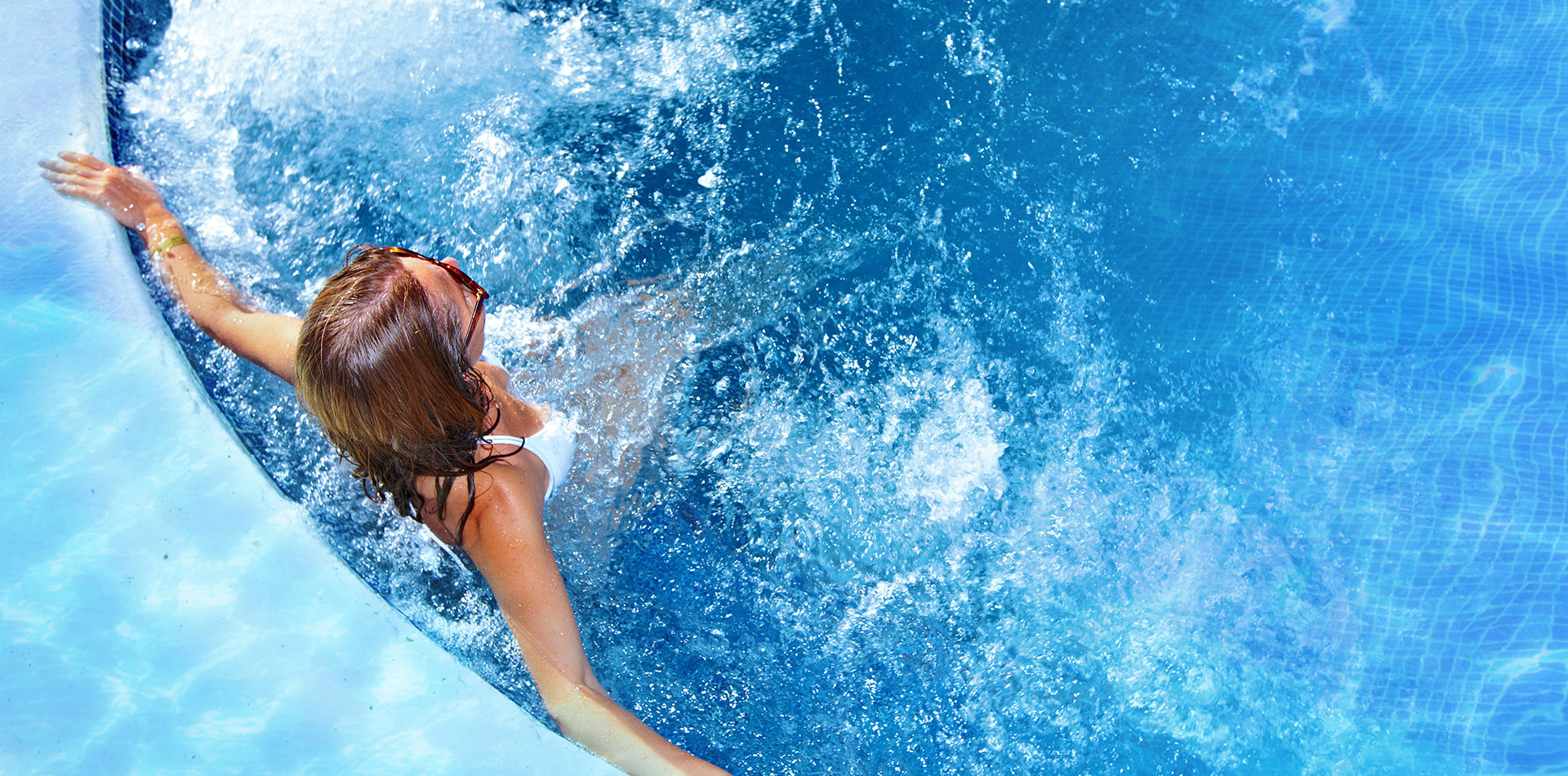
Treating your pool water well can sometimes seem complex: what products to use, when and in what quantity? However, this treatment is crucial for the health of bathers and in reality requires only basic knowledge to be carried out correctly and to ensure good water quality throughout the season.
It is the principle of “the right dose at the right time” that must guide the treatment of water: this is how you will avoid unpleasant problems with green water, redness and tingling of the skin or premature wear of the equipment.
Adjusting the water balance
For efficient treatment of pool water, the first step is to maintain its natural balance between hardness (TH - limescale), alkalinity (TAC) and pH (hydrogen potential). In the event of an imbalance, the pH varies rapidly: chlorine, sensitive to pH, then becomes ineffective and no longer disinfects the pool.
If these terms are foreign to you, no problem: the Taylor balance clearly gives the value of TAC to reach depending on the hardness of your TH water and the ideal pH value for chlorine which is between 7.4 and 7.2.
Pool water balance diagram (Taylor balance):
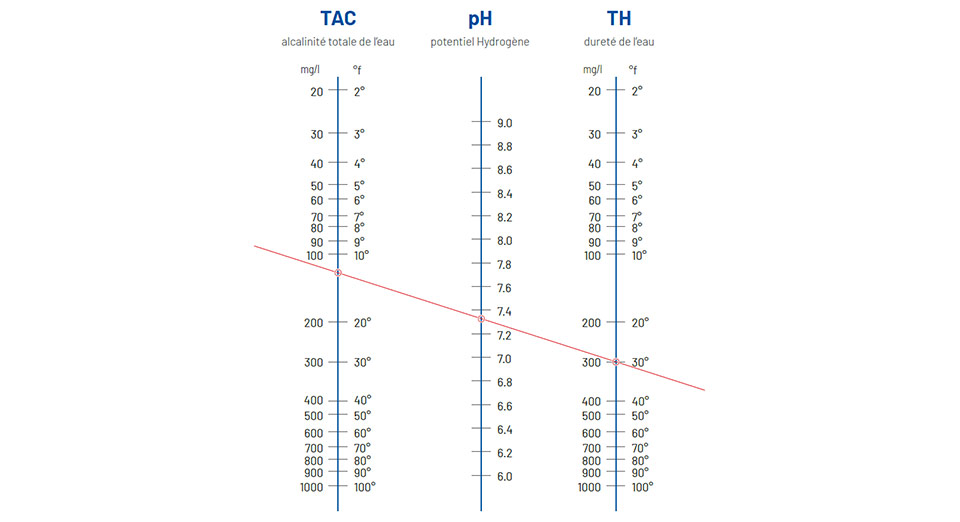
Limescale (TH) is inherent in the filling water of your pool, so the hardness of your drinking water depends on your geographical location. We specify “drinking water” because filling your pool with well or borehole water is a bad idea: what you gain in “free” water, you then lose in treatment costs for this water as it still contains undesirable elements (bacteria, algae, metals, etc.).
Alkalinity (TAC) varies greatly, particularly because demineralised rainwater lowers the alkalinity (especially in winter). It must therefore be increased to the value given by the Taylor balance: by drawing a line between the TH of its drinking water and an ideal pH of 7.4 - 7.2, we obtain the TAC value to be reached.
This value then makes it possible to naturally stabilise the pH level by giving water a “buffer capacity”. Conversely, if the TAC is too low, the pH varies greatly; if it is too high, the pH no longer moves but is around 7.8, which removes all chlorine efficiency.
In summary, for an average water hardness, the TAC is maintained between 80 and 120 in order to maintain a pH between 7.2 and 7.4.
Adjusting the water balance is therefore an essential step before taking care of the treatment products.
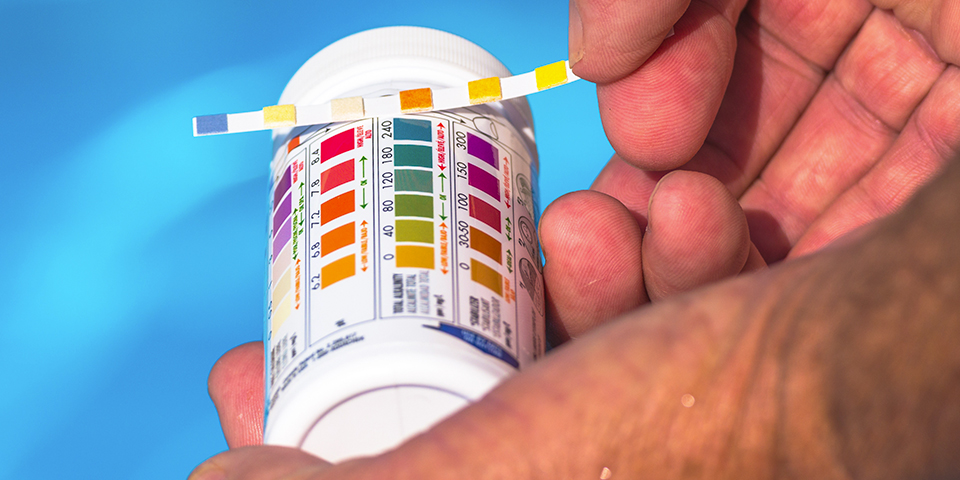
Dosing the treatment products
First of all, treatment products must never be mixed outside the pool: violent reactions (explosions) could occur.
Biocidal products such as chlorine are powerful chemicals that must be used in reasoned quantities. A swimming pool must be disinfected but must also be disinfecting for the safety of bathers by eliminating any bacteria, viruses, algae, etc. that may be found there. It is also pointless to treat your swimming pool in winter if it is not used for bathing (except for the beauty of the water).
It is therefore advisable to use the treatment products sparingly, knowingly and especially not “randomly”, according to the principle: the right dose at the right time.
Automation for rational water treatment
The automation of water treatment provides the considerable advantage of permanent regulation, which prevents water from turning green without being noticed, which will always cost more to catch up than the cost of installing an automatic water treatment system.
A complete water treatment system such as our SOLEO RX or SOLEO Salt initially regulates the pH using a first probe. It then adjusts the chlorine level using the second probe called ORP (most commonly seen in private pools), which measures the oxidising power of water. If the latter is too low, the device then increases the amount of chlorine in the water.
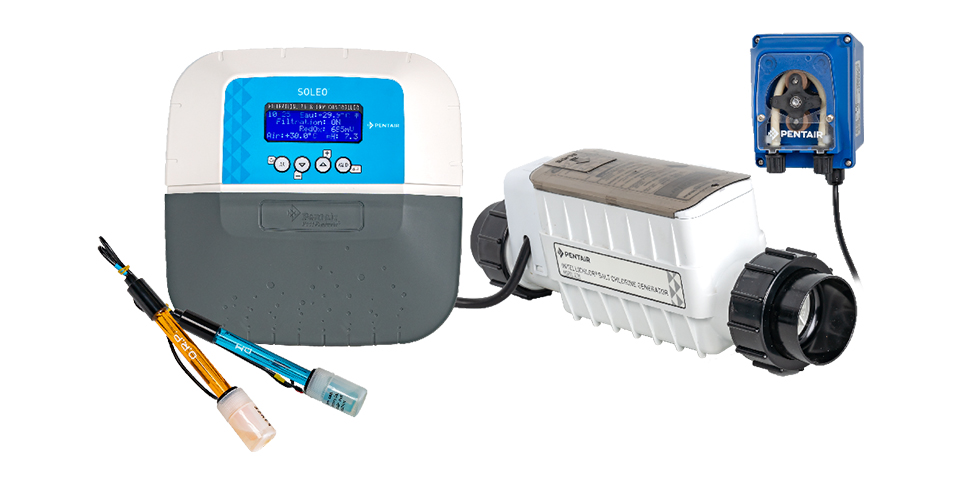
Our IntelliChlor solution allows chlorination thanks to the principle of salt electrolysis, preventing you from buying, transporting or storing chlorine.
The automation of water treatment offers real peace of mind, especially if water chemistry is not well known. Moreover, such a system will always be more effective than even diligent hand control, because it is impossible to monitor in real time, like an automatic device, the variation in the composition of the water over the course of the day.
Finally, it should be noted that it is still recommended to shock the water from time to time using the appropriate chlorine (“shock chlorine”). This is because some bacteria can become accustomed to the constant chlorine set by an automatic system and eventually resist it. Carrying out one or two shocks per season then removes stubborn bacteria for good.
Variable speed pump for complete observation
In parallel to the automatic system and in order for the total volume of water to be monitored, it is necessary for it to remain constantly in motion. For 24-hour traffic, the installation of a variable speed pump, such as our Ultra-Glas VS2 is recommended. At a constant low speed, it allows permanent monitoring and adjustment of water parameters and therefore the right dose of product at the right time. Discover the spectacular benefits of the variable speed pump here.
Water treatment with chlorine pebbles?
Without an automatic device, traditional chlorine rollers are generally used, in stabilised or unstabilised form. The former is UV-resistant and retains a persistent presence in the pool: however, the stabiliser accumulates in the pool and gradually reduces the effectiveness of the chlorine. The non-stabilised form (or "shock chlorine") immediately reacts strongly: it is useful for dealing with the problem of green water, for example, but does not allow long-term treatment.
The solution is therefore to use an unstabilised chlorine with slow diffusion, which allows regular treatment, by adding a little stabilising agent by hand into the pool water in a precisely controlled quantity.
Placing the chlorine roller in the skimmer is a very bad idea! In addition to its potential accessibility to children, the chlorine concentrated in this area falls by gravity towards the pump and can damage the equipment by attacking, for example, certain metal fittings. Finally, by placing the roller at the level of the skimmer, the water is treated at the end of the pool rather than at its entrance, which is where the best possible quality is most needed.
The installation of a chlorinator (roller tank connected to the circuit and ideally placed in the secure technical room – away from children for example) solves these problems by continuously diffusing the chlorine from the rollers, according to a predefined setting, directly into the water that returns to the pool. However, this practical solution remains less reasoned in the use of processing products than real automation.
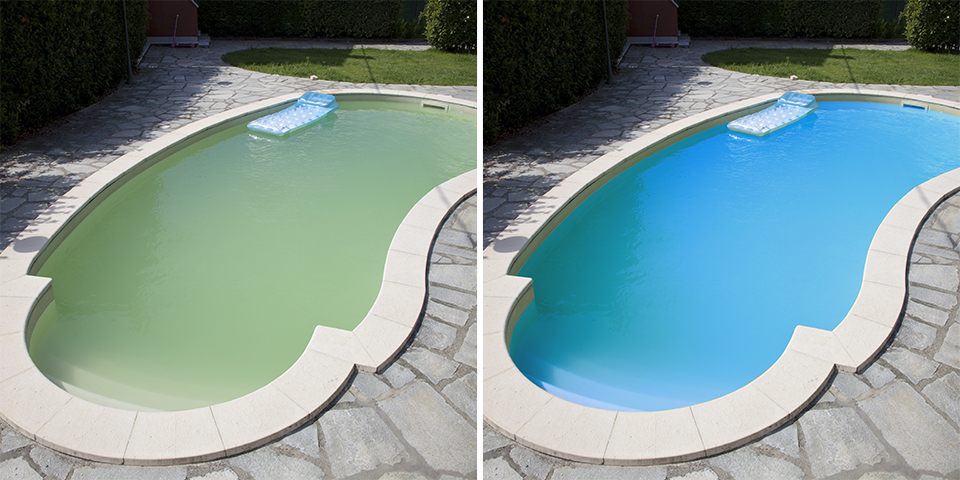
How to further reduce the need for treatment products
The filter: the most important equipment for water treatment
The filter plays a very important role in the hydraulic network since it is responsible for almost 80% of the water treatment work. If it is effective, the need for biocidal products is reduced by the same amount.
An element filter like our Clean & Clear Plus™ equipped with 4 cartridges is the best compromise: more efficient than a sand filter, it also does not impose too restrictive maintenance. This type of filtration can be considered virtuous, thanks to its many benefits.
Another advantage of this type of filter is that it does not need flocculant (exclusively reserved for sand filters), which makes it possible to do without an additional treatment product.
Annual maintenance to reduce product needs
It is recommended to descale the filter each year. Limescale is a medium for the proliferation of bacteria and creates preferential paths in sand filters, which greatly reduces their effectiveness: this then leads to the use of more water treatment products without solving the problem of pollution due to limescale.
Pool cover and its many advantages
In addition to sometimes meeting a legal obligation, it is ideal to cover your pool when not in use. Pollution occurs only through the surface of the water: rain, plants, animals, etc. Any organic element that disintegrates into the pool must then be treated, which a pool cover limits. It also protects against UVs that destroy chlorine.
Furthermore, the cover also reduces evaporation and water cooling and thus reduces energy expenditure. Finally, it also limits accidents in the event of a fall in the pool (child, animal): in short, the cover offers many benefits to pool owners.
Bathers’ showers: important at home too!
While showering before entering a public pool is common practice, it is equally important in the context of a private pool. Indeed, the first pollution comes from swimmers, because of the many organic materials that they carry on their skin that should not be put in pool water.
The right dose of treatment products at the right time
Biocide treatment of pool water is therefore necessary for the health of bathers but must be as conscious and reasoned as possible. When this is not the case, water can quickly suffer from a surplus of chemicals or, on the contrary, be ineffective in combating bacteria and other undesirable organic presences, sometimes dangerous for bathers.
To avoid these problems and keep your mind at ease throughout the season, entrusting this treatment to automatic devices is by far the best solution!
If you want to learn more about disinfectant products, you can consult our article entitled Rules on disinfectant products: constraint or opportunity for pools?
Add new comment